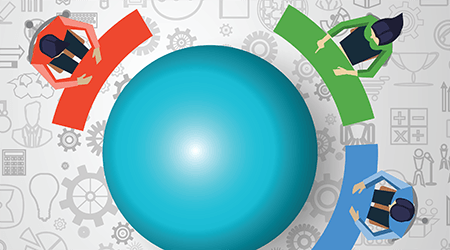
There has been nothing normal about the last 16 months for facility cleaning executives. Facilities closed, some opened, then they closed again. Demands for cleaning skyrocketed while product availability dropped. Safety requirements fluctuated and labor issues were magnified.
The road to get to today has been bumpy, but custodial teams remain resilient. Managers continue to make adjustments so as to satisfy increased demands for cleaning, while also navigating one challenge after another.
Facility Cleaning Decisions recently sat down with members of our advisory board to discuss trials and tribulations they encountered throughout the pandemic, as well as strategies for success. Here, they address some of their biggest challenges, program changes they implemented, the perception of clean, management hurdles and more. For even more questions, and complete answers from our panel of experts, visit www.CleanLink.com/27171fcd.
Roundtable Respondents
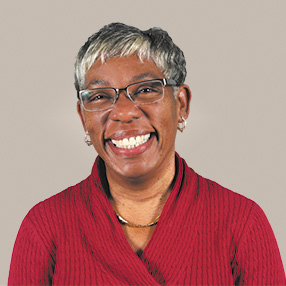
Ada Baldwin, MREH
Director for University Housekeeping
North Carolina State University
Raleigh, North Carolina
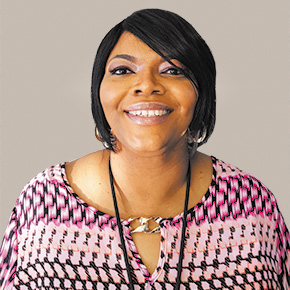
Babette Beene
Environmental Services Manager
University of Texas MD Anderson Cancer Center
Houston, Texas
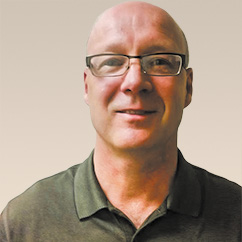
Michael Jones
Director of Custodial Services
Columbia Public Schools
Columbia, Missouri
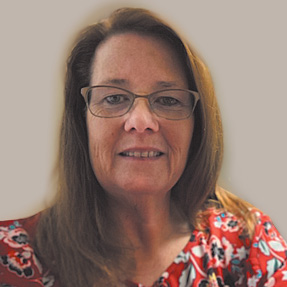
Karie King, CESE, CMIP
Manager Environmental Services Aurora BayCare Medical Center Green Bay, Wisconsin
What was the biggest change you experienced in your cleaning program as a result of the pandemic?
KING: The hospital system was in a continuous state of change and communication. We quickly adjusted to the regularly changing regulations on the details of cleaning, safety, and product usage so as to protect our staff and our patients. So much occurred out of the normal realm of our jobs, but our team all worked together for the best of each other and the patients.
JONES: This is a hard question to answer. In fall 2020, our district closed the secondary schools in favor of virtual learning. Meanwhile, the elementary schools had in-person learning four days per week, using Wednesdays for virtual learning. Wednesdays became "Special Detail Cleaning Day."
On in-person learning days, all students ate breakfast and lunch in their classrooms, due to social distancing regulations. This created huge issues for custodians who were now responsible for cleaning up food and drink spills on carpet or vinyl flooring.
Meanwhile, to tackle extra cleaning, sanitizing and disinfecting of most touched surfaces, we pulled staff from the secondary building and placed an extra person in all elementary schools. They were given the responsibility of sanitizing door knobs, drinking fountains, restrooms and more. Cleaning checklists were placed at each location for custodians to initial after completing the task. This was to provide teachers and staff a visual that we are cleaning these surfaces every hour.
We have since returned back to full in-person learning, but have kept these cleaning practices in place. In 2022, I will probably eliminate the checklists.
Budgeting wasn’t really an issue seeing as we will only use about 70 percent of our operating budget. Obviously, if students are not in school and roughly 50 percent of teachers taught virtual from their homes, you do not use nearly as many paper towels, trash bags, toilet paper, hand sanitizer and other consumable products.
BEENE: At the hospital, we had to transition entire floors to accommodate COVID-19 patients. The responsibility of maintaining the cleaning of those patient rooms was a challenge, along with the new requirements for personal protective equipment (PPE). We're still not sure which of these requirements will be permanent, but wearing the mask and cleaning checkpoints every two hours may stick around.
BALDWIN: The biggest change on campus was staffing. We did not have the ability to hire temporary staff or fill vacancies needed to complete the increased requirement of high-touch surface cleaning. Meanwhile, area closures of daycares and K-12 schools caused a reduction of permanent full-time staff, as workers were needed at home. The same was true for staff responsible for the care of parents unable to live alone or unable to live in an adult care facility.
Whether or not our staffing concerns continue will be dependent upon Centers for Disease Control and Prevention (CDC) guidelines for increased cleaning of high-touch surfaces and guidelines for the return of children to daycares/K-12.
How did your cleaning programs change in response to the pandemic?
BALDWIN: We've increased the cleaning frequency of high-touch surfaces, which fluctuates based on CDC guidelines.
We're also maintaining hand sanitizing dispensers/stations, which includes filling dispensers, purchasing products and replacing stations/dispensers, as needed. This will most likely become a permanent part of our program. Other changes that we've made in the last 12 months that will become permanent include incorporating cleaning products that adhere to CDC guidelines, the use of electrostatic sprayers, the addition of masks to our required list of PPE, increased handwashing when performing cleaning tasks, and the scheduling of work assignments to assure social distancing.
KING: The chemicals we used prior to the pandemic met CDC guidelines, so that didn't change for us. The biggest changes we saw were with video conferencing and changes to PPE.
JONES: We went from having roughly 100 hand sanitizer stations in the schools, to 420 stations placed in strategic locations in all buildings. These are now permanent moving forward. Other than that, cleaning processes remained pretty much the same, with two exceptions: using Wednesday for detailed cleaning; and, due to eating breakfast and lunch in the classrooms, all spaces with floor tile had to be fully mopped each day instead of spot mopping.
BEENE: All of our cleaning processes have remained the same — they’ve just increased due to COVID-19 requirements.
Perceptions Of Cleaning And Management Hurdles

 The Down and Dirty on Cleaning in Virus Season
The Down and Dirty on Cleaning in Virus Season How Surfactant Use is Expanding in Commercial Cleaning
How Surfactant Use is Expanding in Commercial Cleaning Clean Buildings Conference
Clean Buildings Conference
